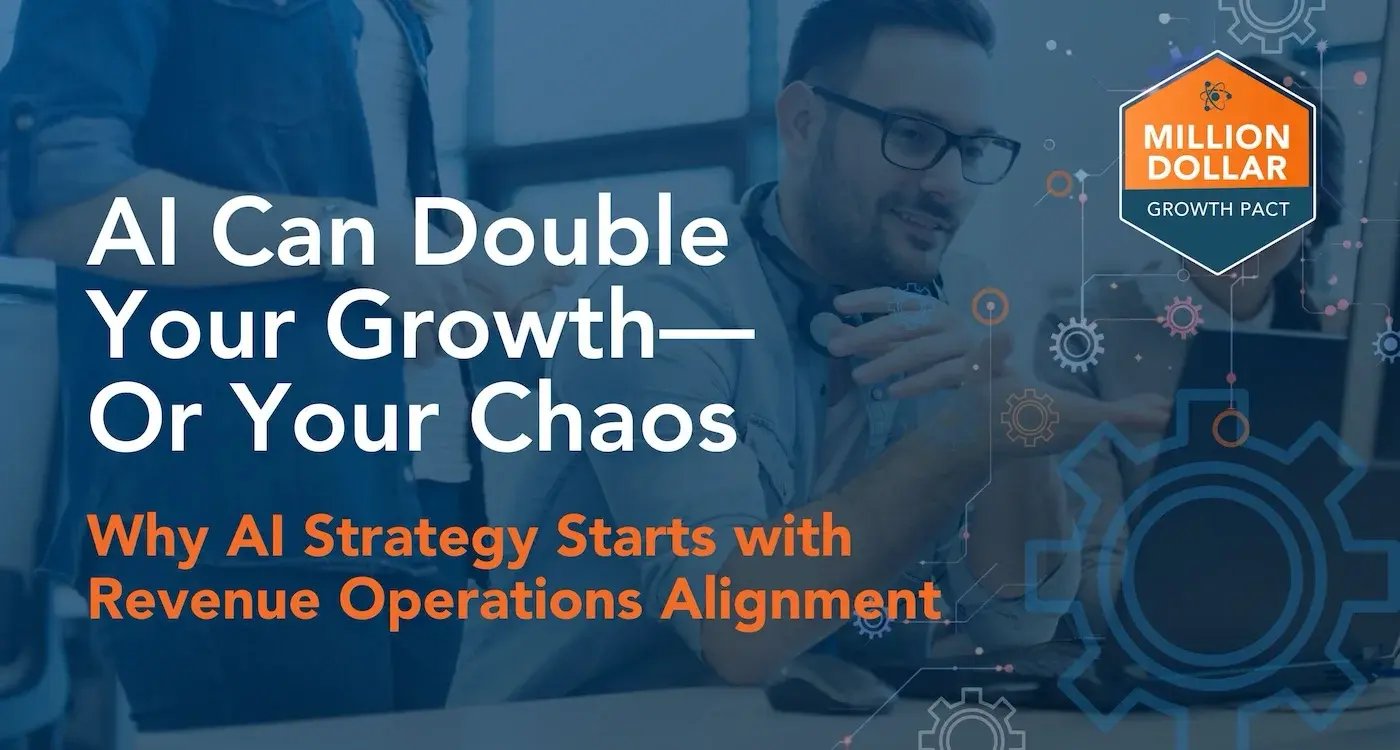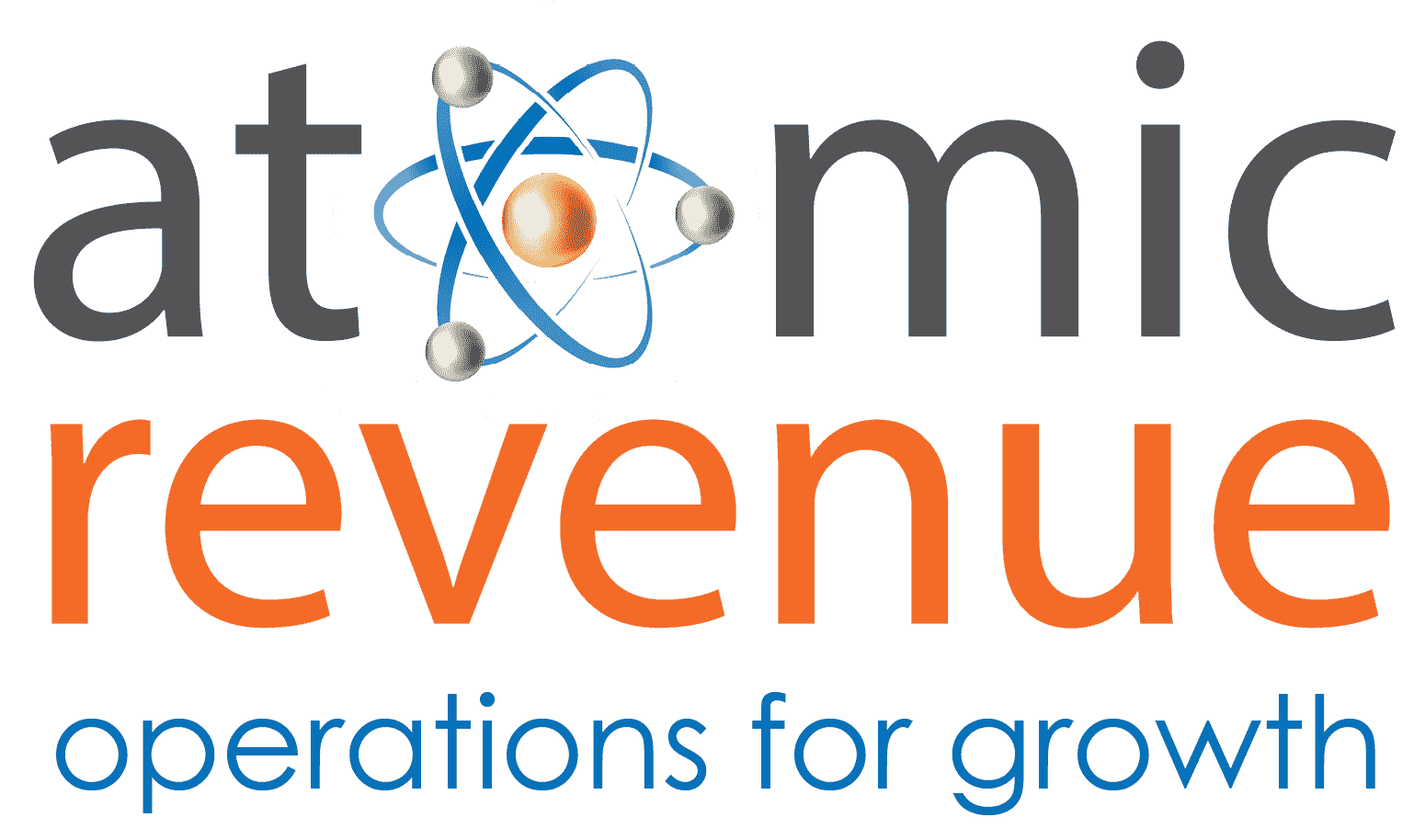TL;DR
95% of AI pilots fail because companies deploy AI before fixing revenue operations. Our Million Dollar Growth Pact (MDGP) implements eight sequential 90-Day Optimization Sprints™ to align teams, clean data, and standardize processes first. This creates a stable foundation from which AI can accelerate growth instead of amplifying chaos. The result: predictable, measurable revenue growth with AI as an amplifier, not a band-aid.Why Your AI Implementation Strategy Should Start with Revenue Operations
Artificial Intelligence (AI) promises to revolutionize how companies improve profitability, streamline processes, and scale capabilities. From predictive lead scoring to automated outreach, AI can transform sales, marketing, and customer success.
But here’s the catch: AI is an amplifier, not a fixer. Without a strong, aligned revenue engine, AI simply scales chaos.
That’s why the Million Dollar Growth Pact (MDGP) exists. The MDGP guarantees measurable, sustainable revenue growth by first optimizing the systems that drive it. It is delivered through the Revenue Alignment System™—an eight-sprint framework that methodically repairs, aligns, and scales your revenue engine while layering in automation and AI when it can be most effective.
Each phase of this system is executed through a 90-Day Optimization Sprint™, where people, process, and data are synchronized to produce visible revenue impact every quarter.
What Happens When Companies Skip Revenue Operations in Their AI Implementation Strategy?
Many companies jump straight into AI because it’s trendy or because competitors are using it, without assessing whether their underlying revenue operations can support automation.
Imagine a sales team using AI-driven lead scoring when the CRM contains incomplete or inconsistent data. AI may recommend actions, but they’re based on flawed inputs, leading to missed opportunities and frustrated teams.
Marketing teams face the same challenge. Automated campaigns powered by AI may appear personalized, but if messaging is inconsistent or handoffs between marketing and sales are broken, AI simply spreads inefficiency faster.
Despite $30–40 billion in enterprise investment in generative artificial intelligence, AI pilot failure is officially the norm — 95% of corporate AI initiatives show zero return, according to MIT’s Media Lab and Forbes research ¹
¹Forbes: Why 95% of AI Pilots Fail—and What Business Leaders Should Do Instead
How to Build an AI-Ready Revenue Operations Foundation
Before implementing AI, companies must standardize and stabilize their revenue operations. This means:- Clear, repeatable processes for marketing, sales, and customer success.
- Accurate, structured data in the CRM..
- Aligned teams operating on shared goals and KPIs.
- Documented workflows that make scaling possible.
The Revenue Alignment System™: Eight Sprints to Predictable Growth
The Revenue Alignment System™ is the delivery engine behind the Million Dollar Growth Pact. It divides the journey to scalable revenue into eight sequential Optimization Sprints, each building on the one before it:- Diagnose & Align – Map the entire revenue flow and establish baseline KPIs.
- Data Hygiene & Infrastructure – Clean CRM data and configure integrated systems.
- Process Optimization – Standardize handoffs, lead routing, and service delivery workflows.
- Messaging & Enablement – Align marketing, sales, and customer success language around the customer journey.
- Pipeline Acceleration – Automate reporting and improve conversion efficiency.
- Revenue Forecasting & Insights – Implement dashboards and predictive models.
- AI Integration & Automation – Layer in targeted AI use cases with proven ROI.
- Scale & Sustain – Institutionalize learnings, governance, and continuous optimization.
When Should AI Be Introduced in Your Implementation Strategy?
AI as an Amplifier, Not a Fixer
AI performs only as well as the system it’s applied to. Once the first few Optimization Sprints have stabilized and aligned the revenue engine, AI can safely be introduced to:- Accelerate pipeline velocity
- Optimize campaign performance
- Improve forecasting accuracy
- Free leadership to focus on strategic growth
What Results Can You Expect from This AI Implementation Strategy?
The Payoff: Predictable, Measurable Growth
When organizations follow the disciplined sequence—Revenue Diagnostics → Revenue Alignment System™ → Eight 90-Day Optimization Sprints™ → Strategic AI Enablement—the results are both tangible and repeatable. The MDGP ensures that revenue engines are:- Fully operational and documented.
- Aligned across marketing, sales, and operations.
- Measurable and predictable with clear KPIs.
- Ready to scale intelligently with AI.
Conclusion: Align First, Automate Second
AI has enormous potential to drive efficiency and revenue—but only when systems, data, and teams are aligned to scale.
The Million Dollar Growth Pact, delivered through the Revenue Alignment System™ and its eight 90-Day Optimization Sprints™, provides the roadmap. By fixing, aligning, and optimizing revenue operations first, businesses ensure automation enhances outcomes rather than amplifies chaos. The result: predictable, measurable, and transformative growth—exactly what the MDGP guarantees.
Frequently Asked Questions: AI Implementation Strategy
Q: Can AI fix broken revenue operations?
A: No. AI amplifies existing systems. AI scales efficiency OR chaos depending on your foundation. A proper AI implementation strategy always begins with revenue operations optimization, not AI deployment. Without clean data, aligned teams, and documented processes, AI will multiply your problems instead of solving them.
Q: How long before we can implement an AI strategy?
A: After 2-3 Optimization Sprints (6-9 months), when data and processes are stable. However, light automation can be introduced as early as Sprint 5 within controlled environments. The best AI implementation strategy builds gradually, ensuring each layer of automation is supported by operational excellence.
Q: What's the ROI of fixing RevOps before AI?
A: Companies that align revenue operations first see 80-90% AI pilot success rates versus the industry average of 5%. They also reduce AI implementation costs by 40-60% because they avoid expensive mistakes like retraining models on bad data, rebuilding broken integrations, and managing team resistance. The MDGP's AI implementation strategy ensures you invest in AI once, correctly.
Q: Should we pause our AI initiatives to fix revenue operations?
A: If your current AI initiatives are struggling or showing no ROI, yes. Pausing to stabilize your foundation through the Revenue Alignment System™ will accelerate your ultimate success. However, if you haven't started AI yet, this is the perfect time to build the right AI implementation strategy from the ground up.
Q: What AI use cases work best after revenue alignment?
A: Once your foundation is solid, high-impact AI applications include: predictive lead scoring (Sprint 6), intelligent forecasting (Sprint 6), automated personalization at scale (Sprint 7), churn prediction (Sprint 7), and dynamic pricing optimization (Sprint 8). Your AI implementation strategy should prioritize use cases where clean data and process consistency create measurable business impact.
Q: How is the MDGP different from other AI implementation strategies?
A: Most AI implementation strategies start with technology. The MDGP starts with people, process, and data alignment. We guarantee measurable revenue growth because we fix the engine before adding horsepower. Our Revenue Alignment System™ ensures AI enhances operations rather than complicates them—which is why our clients see 15x higher success rates than industry averages.
About the Author
 Tara Kinney is the Owner and CEO of Atomic Revenue, where she continues to problem-solve, innovate, and define the formula for and establish the discipline of revenue operations that launches client growth with stronger foundations and better ROI. As the company's EOS® Visionary, it is her passion to share what she has learned over the course of her career and help other business owners and leaders increase revenue and grow with consistency. She is also a renowned national speaker.
Tara Kinney is the Owner and CEO of Atomic Revenue, where she continues to problem-solve, innovate, and define the formula for and establish the discipline of revenue operations that launches client growth with stronger foundations and better ROI. As the company's EOS® Visionary, it is her passion to share what she has learned over the course of her career and help other business owners and leaders increase revenue and grow with consistency. She is also a renowned national speaker.






